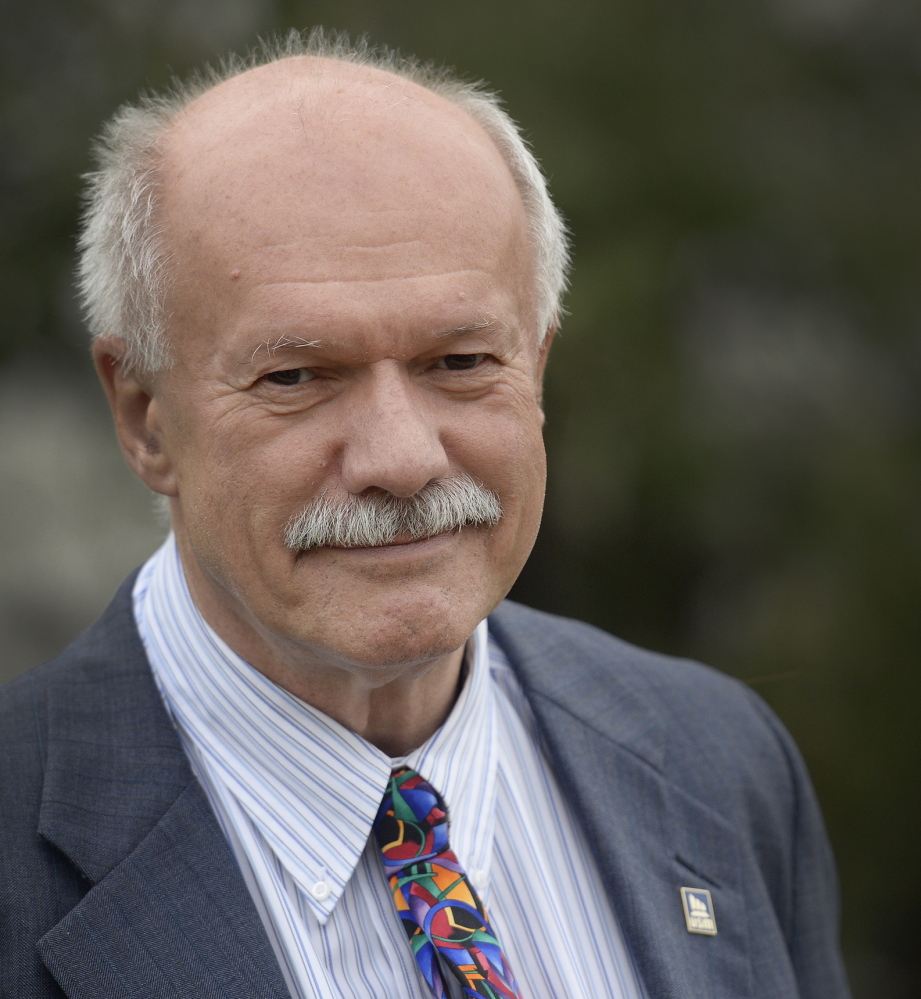David Flanagan’s critics see him as a strip miner, ravaging the University of Southern Maine’s academic landscape with deep reductions in faculty and programs.
To his supporters, USM’s interim president is an artist working in relief, trying to create a better university with carefully placed cuts.
Flanagan, the former CEO of Central Maine Power Co., announced plans this week to eliminate 50 faculty positions and two academic programs at the university, for a projected savings of $6 million. Opponents say the reductions will overburden the remaining faculty, scare away prospective students and undermine USM’s community outreach efforts.
But Flanagan and his allies say the downsizing of USM – a necessity because of its projected $16 million budget shortfall – is just the first step toward breaking down an outmoded institution and reassembling it into a modern university.
The reorganization strategy includes merging a number of departments and refocusing others in a way that promotes interdisciplinary studies and reduces costs, he said.
Further cuts will be announced by the end of this year, Flanagan said. Those will target administrative staff, capital expenditures and other miscellaneous costs.
The university also will invest in areas such as online education, where USM must improve to remain competitive, he said.
“Long-term financial stability is the goal,” Flanagan said. “It has to be self-sustaining.”
What differentiates the restructuring plan from previous, across-the-board cuts is that it is designed to achieve more than just cost savings, he said.
According to Flanagan, the end result will be a university that is leaner, less bureaucratic and better able to keep up with future changes in educational needs.
Still, many USM students and faculty see the latest round of cuts as more of the same, and decry the effort as changing the mission of the school, but not for the better.
The administration is proposing to eliminate a master’s program in applied medical sciences and its five faculty, along with the undergraduate French program, with three faculty members. The two were targeted because the low number of students majoring in those programs did not justify the costs of operating them.
Flanagan has the power to lay off faculty, but the University of Maine System board of trustees must approve the program eliminations. They are expected to vote on them at their Nov. 16-17 meeting, to be held at USM.
The system trustees voted last month to eliminate three other USM programs: the American and New England studies graduate program, the geosciences major, and the arts and humanities major at Lewiston-Auburn College, which is part of USM.
The proposed cuts in the modern and classical languages department mean all three full-time faculty positions are targeted for elimination, and future language courses would be taught by part-time and adjunct faculty.
Kent Ryden, USM professor and director of the American and New England Studies program, is one of those slated to lose their jobs at the end of this year.
Ryden understands the need to bridge the budget gap and modernize the university, but he disagrees with the chosen approach.
“I don’t have a problem with the concept,” he said. “I do have a problem with how it’s being applied.”
Ryden said faculty and programs are the last things that should be placed on the chopping block. He suggested that university officials should look at making cuts in other areas such as athletic programs before slashing courses and majors.
“The cuts should be made as far away from the students as possible,” he said.
Others agree with the approach being taken by Flanagan and other university leaders.
Christopher Hall, CEO of the Portland Regional Chamber, said the 30 percent decline in USM’s enrollment over the past five years is proof that the status quo is untenable.
“We need (USM) to succeed if we expect the region to succeed,” he said. “This needs to be done, and it needs to be done right.”
Hall described the university’s planned reorganization as a purpose-driven effort that will break down barriers between departments to give students more options, not fewer.
“A silo sitting by itself, graduating four people a year, that’s nothing,” he said.
Universities across the country are experiencing similar budget shortfalls that have forced administrators to make tough financial decisions, said Alan Rudnick, a Virginia-based corporate governance consultant who specializes in educational institutions.
Rudnick, a partner at Masters-Rudnick and Associates Inc., described the process as a balancing act with fiscal responsibility on one side and the importance of a quality education on the other.
Cut too deep in the wrong places, and you’ll drive away quality students, faculty and staff.
“It’s great to balance the budget, but what’s left of your reputation?” Rudnick said.
A university is not a business and should not be run like one, he said, because its primary aims are completely different. Students are not shareholders – what they seek is a quality education and an opportunity to enter the workforce.
Still, Rudnick said former business executives often make good university presidents.
“Some universities that have brought in (former) CEOs have been very successful,” he said.
Flanagan said choosing where to make cuts has been difficult, in part because USM has three different computer systems for enrollment, costs and revenue that are incapable of interacting.
Some academic programs such as nursing and engineering are clear money-losers each year, but have been deemed too important to touch, he said.
Flanagan said he welcomes ideas from those who feel his administration is cutting in the wrong places.
“I’ve got a $16 million budget gap – what would you suggest?” he said. “I will keep asking that question.”
Send questions/comments to the editors.




Comments are no longer available on this story